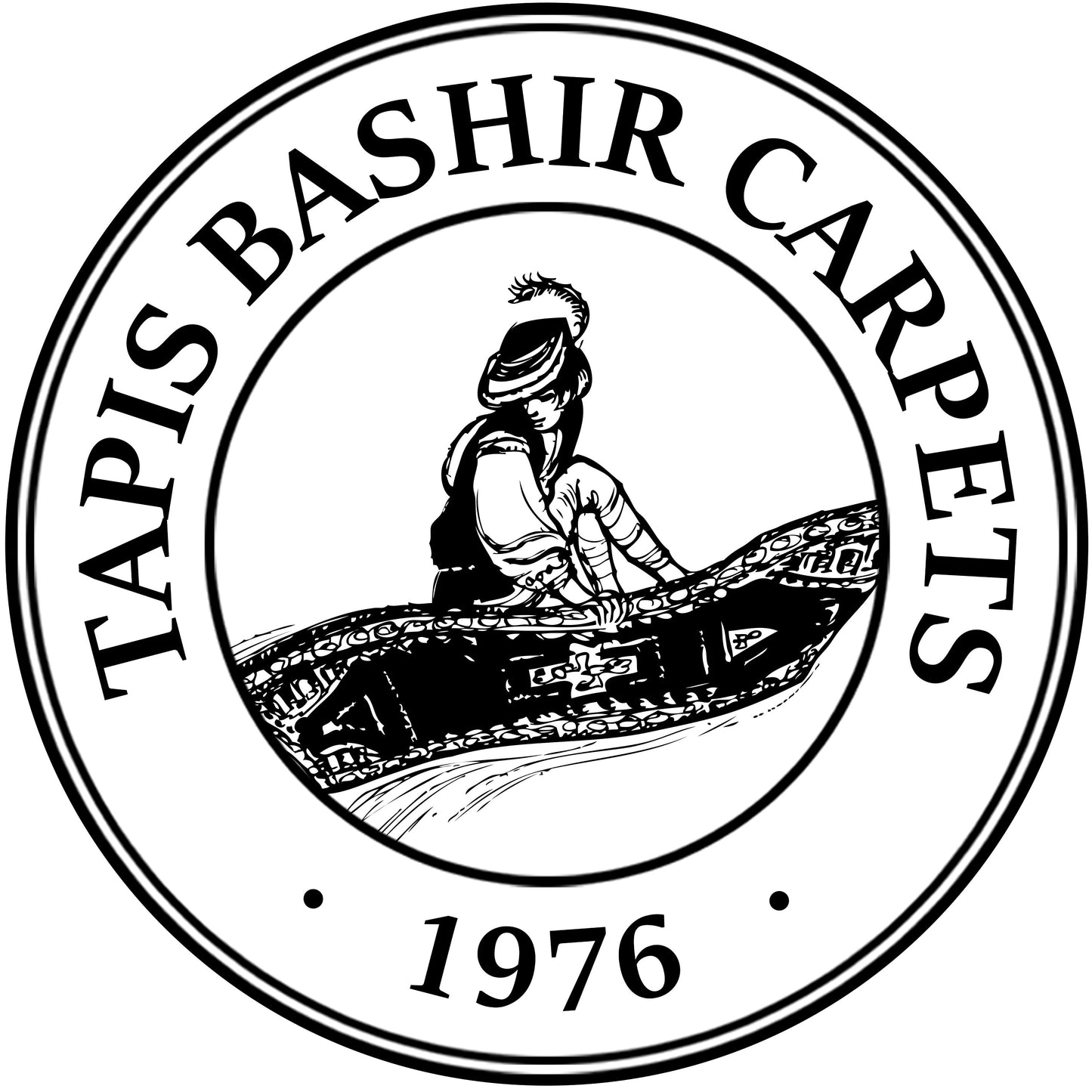Sultanabad Wool Carpet 9'5" x 7'11"
Overview
Materials & Craftsmanship:
This diligently hand-knotted area rug is made of 100% pure lamb’s wool. Wool is a natural material, representing a healthy choice that is environmentally friendly with a long list of benefits. The pile of this wool rug is hygienic and non-allergenic, as the natural pile also deters the growth of bacteria and dust mites. It represents a great choice for asthma sufferers due to its natural filtering ability. The rug feels soft under the foot while remaining wear-resistant and long-lasting. With proper maintenance tailored to its needs, this rug can last over 75 years.
Finishing:
The finishing of this carpet was done using centuries old traditional techniques. Once its laborious hand-knotting was completed, it was rolled and entirely submerged in a sanitizing bath where its fibers fully absorbed all cleaning liquid. After which it was laid flat on the ground where a team of cleaners used wooden oar-like paddles to push the water through its fibers and draw out impurities. Oar strokes were done in sync to prevent the carpet from getting torn. Each stroke tightened the knots even further. No machines were involved in its washing or drying.
A Brief History of Sultanabad Area Rugs
 The city of Sultanabad (now known as Arak) was founded in 1808. At the time, it became the major center of rug production in Iran. Sultanabad carpets are distinguished as the highest quality of Mahal productions manufactured in the Arak region. Other types of Sultanabad designs may include productions from the village of Mushkabad in Iran. Farahans and Sarouks were also made in the Arak region, though are wholly different.
The city of Sultanabad (now known as Arak) was founded in 1808. At the time, it became the major center of rug production in Iran. Sultanabad carpets are distinguished as the highest quality of Mahal productions manufactured in the Arak region. Other types of Sultanabad designs may include productions from the village of Mushkabad in Iran. Farahans and Sarouks were also made in the Arak region, though are wholly different.
From the mid-19th-century onward, Persian Sultanabad rugs were exclusively made for the European market. They often favored the bold floral designs with spacious patterned rugs.
All rugs and carpets from this period were exclusively made with pure and natural dyes. Dark red, blue, soft green, gold, and ivory are the typical colors. However, the most popular color of the Sultanabad repertoire was a deep rose red. The red dye was created by bathing wool for two days in madder and whey after which it was scoured for nearly another two days with running water. Their warps, foundation and wefts are made of cotton. Their pile is made of wool. The wool of the Sultanabad rugs is hand spun usually from the weaver's own sheep. The rugs are woven using asymmetrical Persian knots to tie each loop one by one.
Besides using wide and bold borders, Sultanabad rugs have designs based on small repeating floral patterns as well as all-over large scale lattice vine patterns. Sultanabad rug designers simplified the designs by creating a special work of art with unique character.
Most similar to the Sultanabads are Heriz and Serapi rugs; this similarity being attributed to the magnificent graphic character of the designs. Yet within this similarity, the line work of the Heriz/Serapis is always more curvilinear and classical. Sultanabads share with Persian rugs all-over designs of palmettes and vine scrolls, but as they use a larger, suppler weave, the Sultanabad designs tend to be larger as well. Sultanabad's have great value in any condition, often favored for their bold floral designs with spacious patterns. To learn more about iranian rugs, please visit our Persian Rugs section.
Sources and inspiration: Bérinstain, Valérie, et al. L'art du tapis dans le monde (The art of carpets in the world). Paris: Mengès, 1996. Print.; Jerrehian Jr., Aram K.A. Oriental Rug Primer. Philadelphia: Running Press, 1980. Print.; Herbert, Janice Summers. Oriental Rugs, New York: Macmillan, 1982. Print.; Hackmack, Adolf. Chinese Carpets and Rugs, Rutland and Tokyo: Tuttle, 1980. Print. ; De Moubray, Amicia, and David Black. Carpets for the home, London: Laurence King Publishing, 1999. Print.; Jacobsen, Charles. Oriental Rugs A Complete Guide, Rutland and Tokyo: Tuttle, 1962. Print.; Bashir, S. (n.d.). Personal interview.; Web site sources and dates of consultation vary (to be confirmed). Without prejudice to official usage.



 Runner Rugs
Runner Rugs 2x3 Area Rugs
2x3 Area Rugs 3x5 Area Rugs
3x5 Area Rugs 4x6 Area Rugs
4x6 Area Rugs 5x7 Area Rugs
5x7 Area Rugs 6x9 Area Rugs
6x9 Area Rugs 8x10 Area Rugs
8x10 Area Rugs 9x12 Area Rugs
9x12 Area Rugs 10x14 Area Rugs
10x14 Area Rugs Round Rugs
Round Rugs Bath Mats
Bath Mats Doormats
Doormats 12x15 Area Rugs
12x15 Area Rugs




















